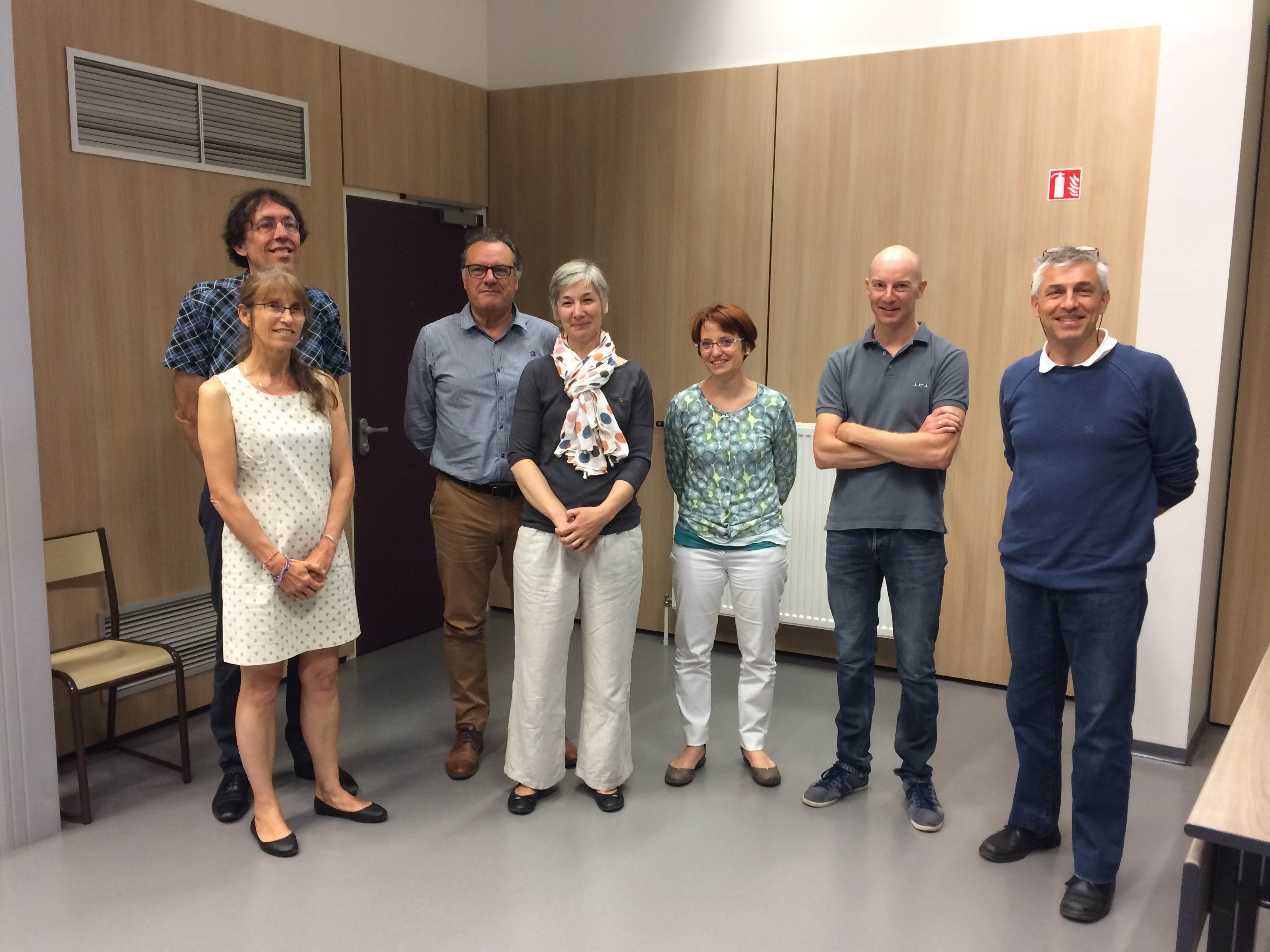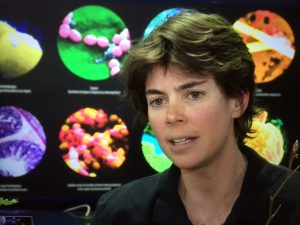Determinants of inoculum production in the ash dieback fungus, Hymenoscyphus fraxineus
Thesis supervisor B. Marçais (benoit.marcais@inra.fr), Thesis Co-Director Marc Buée (UMR IAM, INRA Nancy)
The introduction of exotic fungal species is an important cause of the emergence of forest tree diseases and these invasive pathogens often cause devastating epidemics in forests. Control measures are limited and a better understanding of natural regulations is essential for the development of effective strategies to manage these invasions. Among the possible regulations, the Allee effect (limitation of population growth at low density) or the effect of microflora associated with inoculum reservoirs are poorly characterized for many forest fungal pathogens. The thesis will focus on Chalara ash dieback, a disease that emerged in France in 2008 and has since greatly reduced stand productivity, questioning the interest of this species as a forest species.
The objective of this project will be to better understand what conditions the production of inoculum of H. fraxineus in forest stand litter on a density gradient of the host, the ash tree. We will rely on two existing networks on which a strong relationship between host density and ash dieback severity has been identified (network of forest stands set up to study the effect of density and mixing on ash growth, network of stands on a locality to study the effect of the landscape on disease evolution). Two questions will be examined in more detail: 1) Do the possibilities of encounter of sexual partners generate a significant Allee effect at low host density for H. fraxineus? Can this possible limitation of inoculum production coupled with the limits of dispersion of the pathogenic fungus explain a threshold effect for the development of the epidemic in isolated and small ash populations? 2) Does the microbiota associated with ash rachis present in the litter respond to host density in the stand and can this affect inoculum production along an ash density gradient?
This thesis will be carried out using a dual approach of modeling and studies of fungal communities associated with ash rachis in litter by metabarcoding. The modeling part will extend the work done in Dr. Grosdidier’s thesis that generated the relevant data. The co-supervisors have extensive experience of collaborating on the study of fungal and forest oomycete communities. This work is part of the H2020 HOMED project (“Holistic Management of Emerging forest pests and Diseases”, 2018-22), which provides funding for the PhD grant and will provide a promising scientific framework on the biology of fungi and invasive insects.
Applications will be considered in the last week of July (application before July 22, 2019).
——————————————————————————————————
Déterminants de la production d’inoculum chez Hymenoscyphus fraxineus, agent de la chalarose du frêne
Direction de thèse B. Marçais (benoit.marcais@inra.fr), Codirection de thèse Marc Buée (UMR IAM, INRA Nancy)
L’introduction d’espèces fongiques exotiques est une cause très importante d’émergence de maladies des arbres forestiers et ces agents pathogènes invasifs provoquent souvent des épidémies dévastatrices dans le domaine forestier. Les moyens de lutte sont réduits et une meilleure compréhension des régulations naturelles est indispensable au développement de stratégies efficaces de gestion de ces invasions. Parmi les régulations possibles, les effets Allee (limitation de la croissance de la population à faible densité) ou l’effet des microflores associées aux réservoirs d’inoculum sont mal caractérisés pour de nombreux agents pathogènes fongiques forestiers. La thèse portera sur la chalarose du frêne, une maladie qui a émergé en France en 2008 et a depuis fortement réduit la productivité des peuplements, remettant en cause l’intérêt de cette espèce comme essence forestière.
L’objectif de ce projet sera de mieux comprendre ce qui conditionne la production d’inoculum d’H. fraxineus dans la litière des peuplements forestiers sur un gradient de densité de l’hôte, le frêne. Nous nous appuierons sur deux réseaux existants sur lesquels une forte relation entre densité d’hôte et sévérité de la chalarose ont été mis en évidence (réseau de placettes mis en place pour étudier l’effet de la densité et du mélange sur la croissance du frêne, réseau de placettes sur une commune pour étudier l’effet du paysage sur l’évolution de la maladie). Deux questions seront examinées de façon plus détaillée : 1) Est-ce que les possibilités de rencontre des partenaires sexuels génèrent un effet Allee significatif à faible densité d’hôte pour H. fraxineus ? Est-ce que cette limitation éventuelle de la production d’inoculum couplée aux limites de la dispersion du champignon pathogène peut expliquer un effet de seuil pour le développement de l’épidémie dans des populations de frênes isolées et de petite taille ? 2) Le microbiote associé aux rachis de frênes présents dans la litière répond-il à la densité de l’hôte dans le peuplement et cela peut-il affecter la production d’inoculum le long d’un gradient de densité de frênes ?
Cette thèse sera réalisée par une double approche de modélisation et d’études des communautés fongiques associées aux rachis de frênes dans la litière par métabarcoding. La partie de modélisation prolongera le travail réalisé dans le cadre de la thèse de M. Grosdidier qui a permis de générer les données pertinentes. Les co-encadrants ont une solide expérience de collaboration sur l’étude des communautés fongiques et d’oomycètes forestières. Ce travail s’intègre dans le projet H2020 HOMED (« Holistic Management of Emerging forest pests and Diseases », 2018-22) qui apporte le financement de la bourse et fournira un cadre scientifique porteur sur la biologie des champignons et insectes invasifs.
Les candidatures seront examinées dans la dernière semaine de juillet (candidature avant le 22 juillet 2019).


